Abstract
Pathogenic synergy between Escherichia coli and Bacteroides fragilis was suggested by clinical trials and proved to exist in an experimental guinea-pig wound model. This finding is thought to have important theoretical and practical therapeutic implications.
Full text
PDF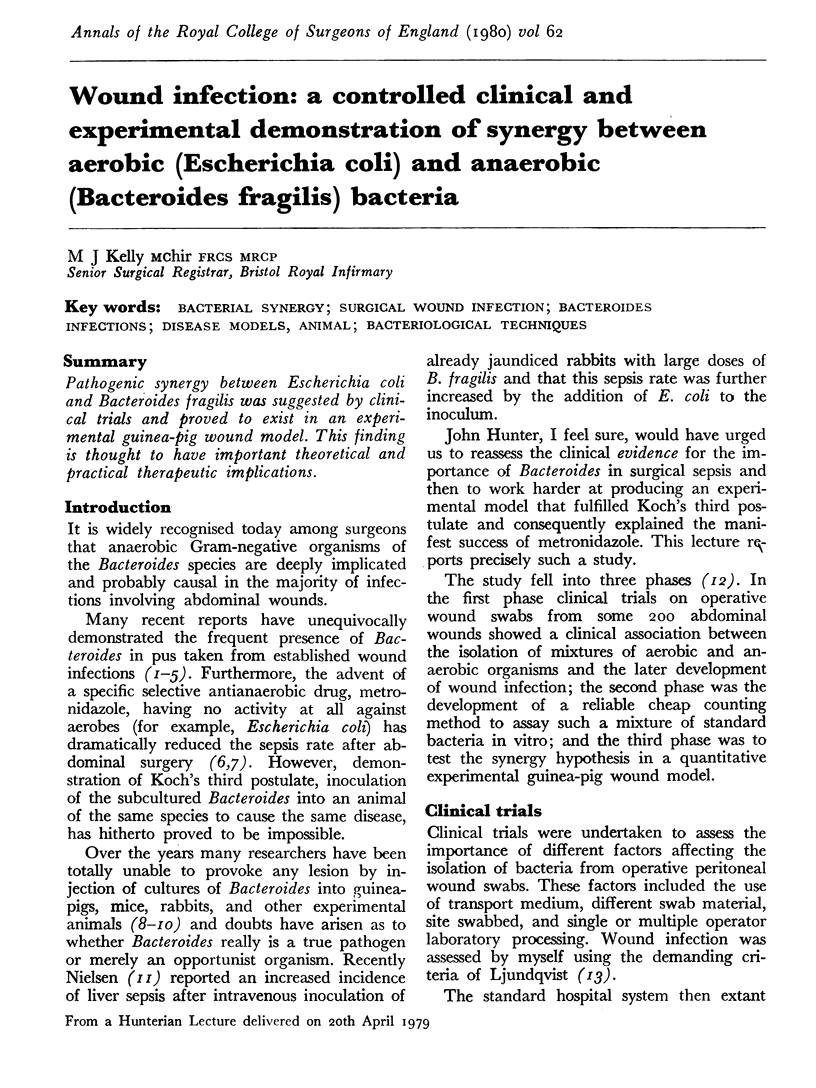

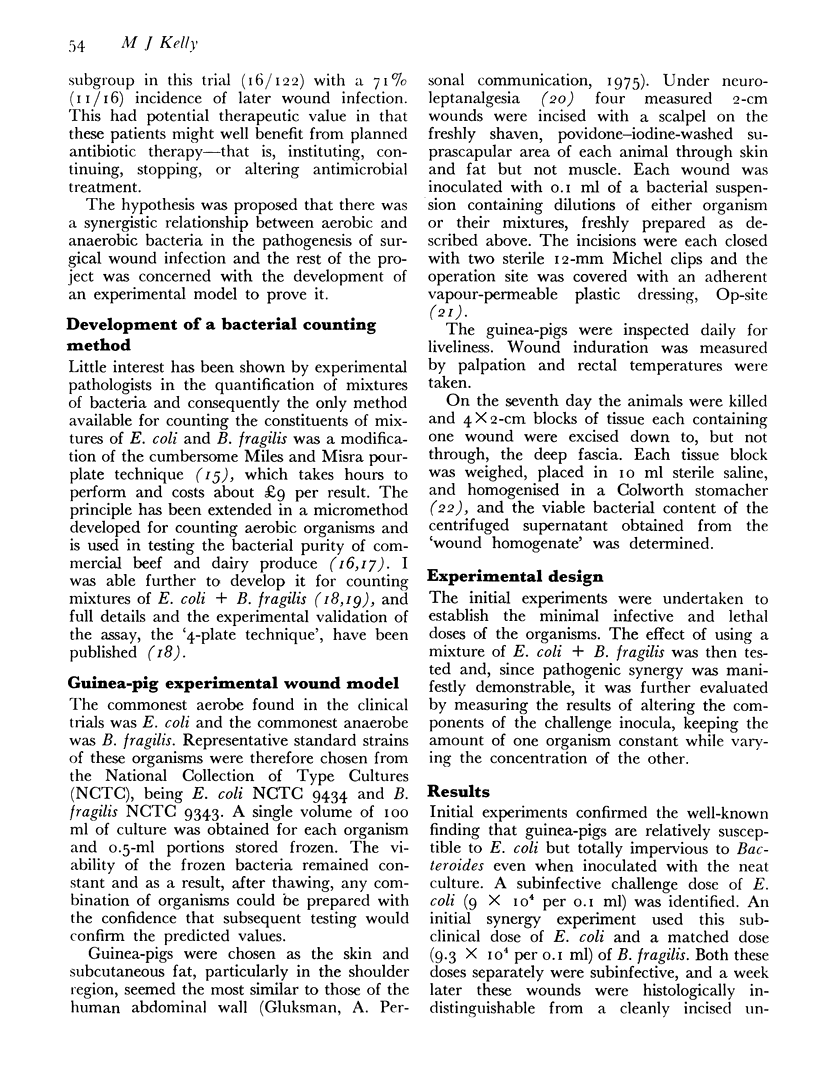
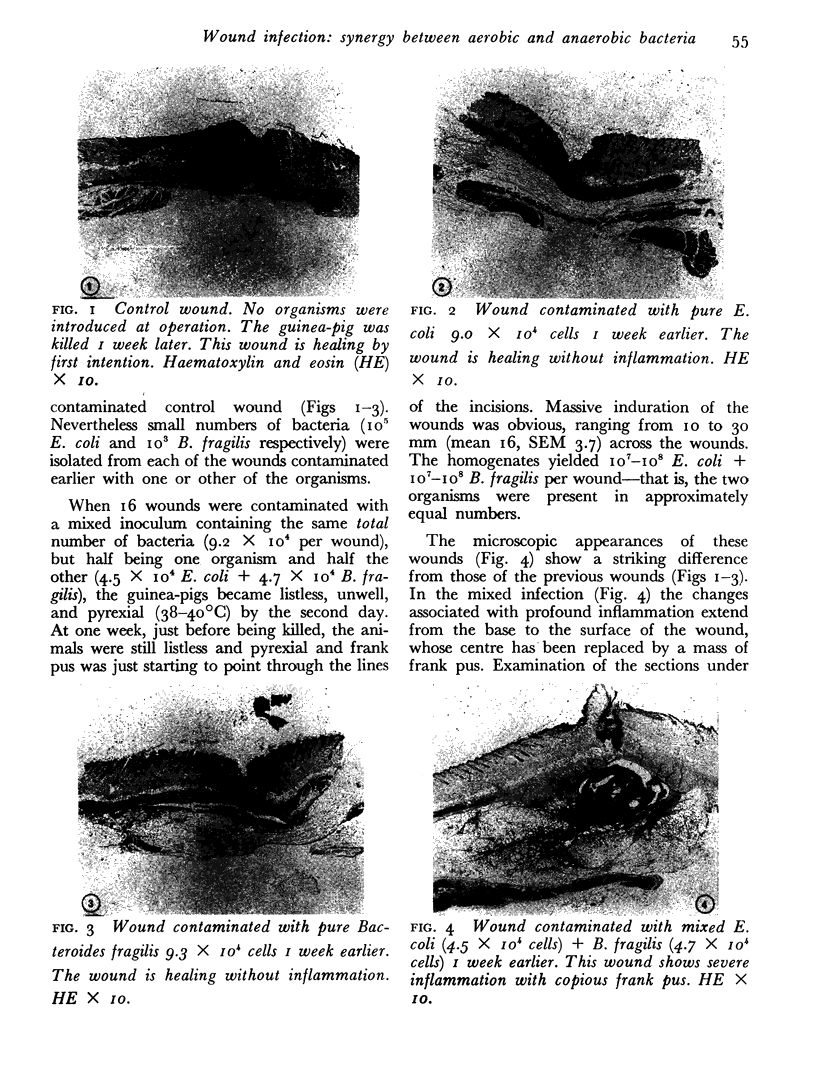

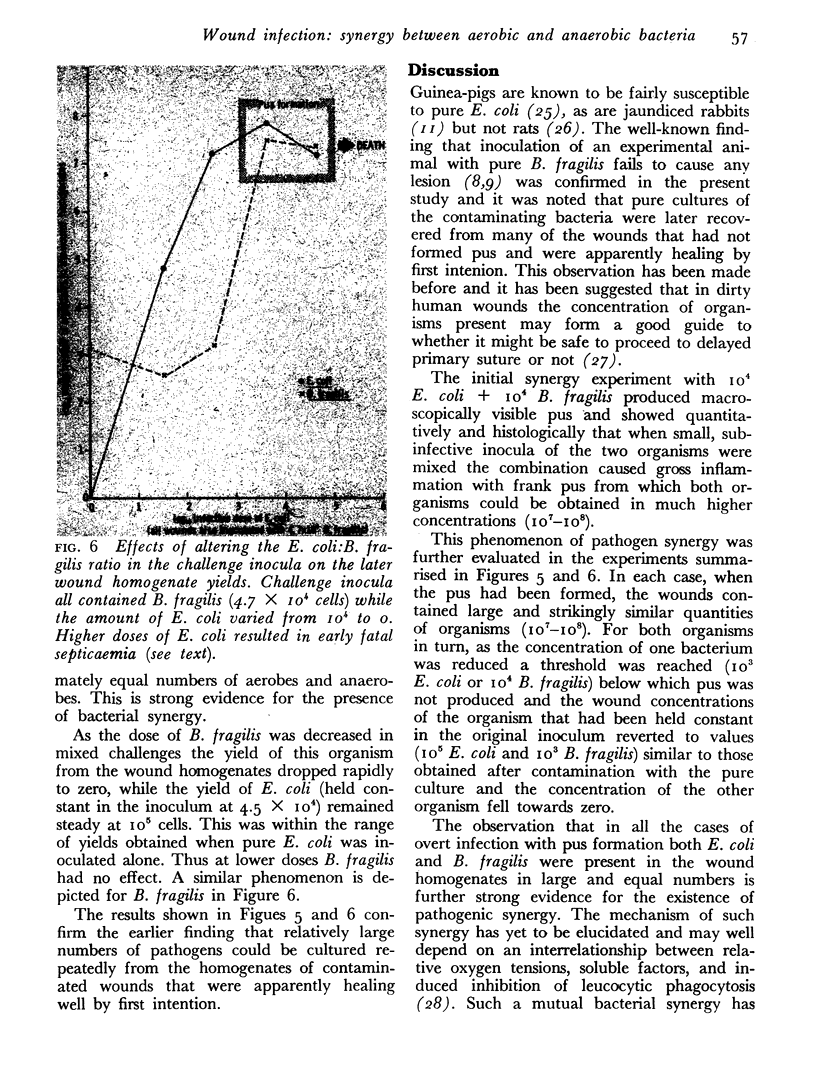

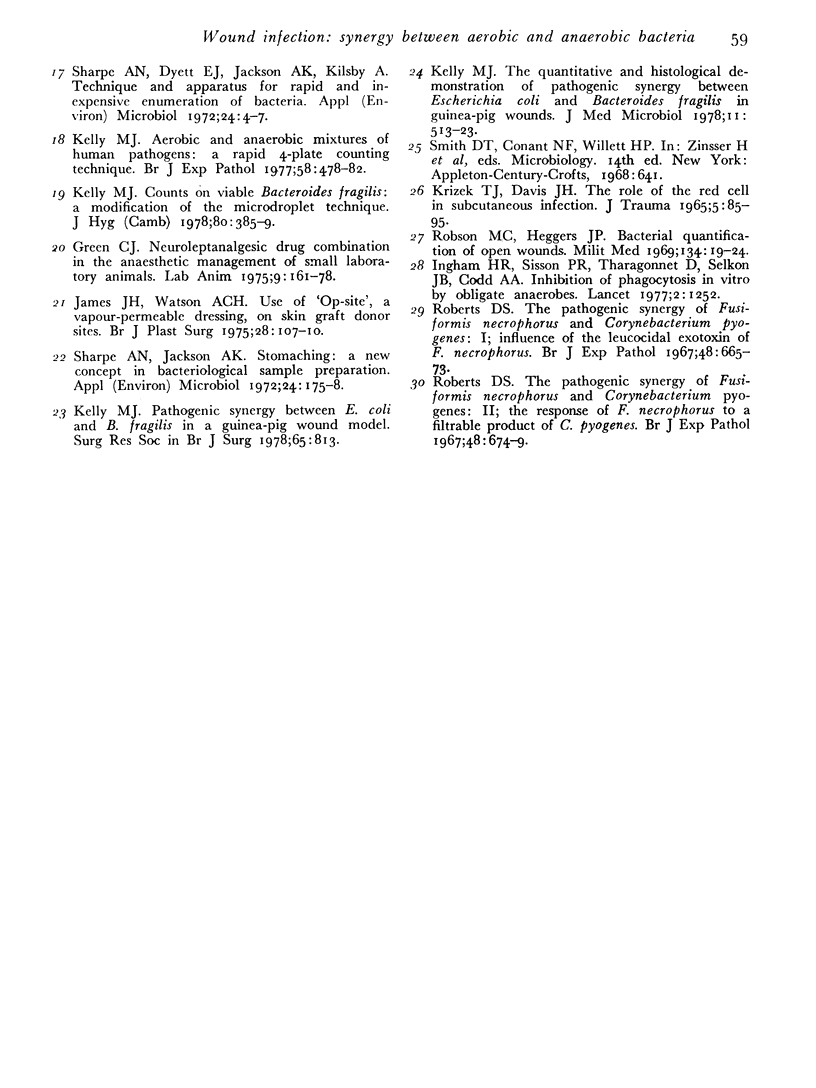
Images in this article
Selected References
These references are in PubMed. This may not be the complete list of references from this article.
- Goldring J., McNaught W., Scott A., Gillespie G. Prophylactic oral antimicrobial agents in elective colonic surgery. A controlled trial. Lancet. 1975 Nov 22;2(7943):997–1000. doi: 10.1016/s0140-6736(75)90289-5. [DOI] [PubMed] [Google Scholar]
- Gorbach S. L., Bartlett J. G. Anaerobic infections. 1. N Engl J Med. 1974 May 23;290(21):1177–1184. doi: 10.1056/NEJM197405232902106. [DOI] [PubMed] [Google Scholar]
- Green C. J. Neuroleptanalgesic drug combinations in the anaesthetic management of small laboratory animals. Lab Anim. 1975 Jul;9(3):161–178. doi: 10.1258/002367775780994574. [DOI] [PubMed] [Google Scholar]
- HITE K. E., LOCKE M., HESSELTINE H. C. Synergism in experimental infections with non-sporulating anaerobic bacteria. J Infect Dis. 1949 JanâFeb;84(1):1–9. doi: 10.1093/infdis/84.1.1. [DOI] [PubMed] [Google Scholar]
- Ingham H. R., Sisson P. R., Tharagonnet D., Selkon J. B., Codd A. A. Inhibition of phagocytosis in vitro by obligate anaerobes. Lancet. 1977 Dec 17;2(8051):1252–1254. doi: 10.1016/s0140-6736(77)92662-9. [DOI] [PubMed] [Google Scholar]
- KRIZEK T. J., DAVIS J. H. THE ROLE OF THE RED CELL IN SUBCUTANEOUS INFECTION. J Trauma. 1965 Jan;5:85–95. doi: 10.1097/00005373-196501000-00009. [DOI] [PubMed] [Google Scholar]
- Kelly M. J. Counts on viable Bacteroides fragilis: a modification of the microdroplet technique. J Hyg (Lond) 1978 Jun;80(3):385–389. doi: 10.1017/s0022172400024839. [DOI] [PMC free article] [PubMed] [Google Scholar]
- Kelly M. J. The quantitative and histological demonstration of pathogenic synergy between Escherichia coli and Bacteroides fragilis in guinea-pig wounds. J Med Microbiol. 1978 Nov;11(4):513–523. doi: 10.1099/00222615-11-4-513. [DOI] [PubMed] [Google Scholar]
- Kelly M. J., Warren R. E. The value of an operative wound swab sent in transport medium in the prediction of later clinical wound infection: a controlled clinical and bacteriological evaluation. Br J Surg. 1978 Feb;65(2):81–88. doi: 10.1002/bjs.1800650205. [DOI] [PubMed] [Google Scholar]
- LJUNGQVIST U. WOUND SEPSIS AFTER CLEAN OPERATIONS. Lancet. 1964 May 16;1(7342):1095–1097. doi: 10.1016/s0140-6736(64)91291-7. [DOI] [PubMed] [Google Scholar]
- Lari J., Kirk D., Howden R. Bacteriological survey of acute appendicitis in children. Br J Surg. 1976 Aug;63(8):643–646. doi: 10.1002/bjs.1800630821. [DOI] [PubMed] [Google Scholar]
- Leigh D. A. Clinical importance of infections due to Bacteroides fragilis and role of antibiotic therapy. Br Med J. 1974 Jul 27;3(5925):225–228. doi: 10.1136/bmj.3.5925.225. [DOI] [PMC free article] [PubMed] [Google Scholar]
- Leigh D. A., Simmons K., Norman E. Bacterial flora of the appendix fossa in appendicitis and postoperative wound infection. J Clin Pathol. 1974 Dec;27(12):997–1000. doi: 10.1136/jcp.27.12.997. [DOI] [PMC free article] [PubMed] [Google Scholar]
- Leigh D. A. Wound infections due to Bacteroides fragilis following intestinal surgery. Br J Surg. 1975 May;62(5):375–378. doi: 10.1002/bjs.1800620512. [DOI] [PubMed] [Google Scholar]
- Roberts D. S. The pathogenic synergy of Fusiformis necrophorus and Corynebacterium pyogenes. I. Influence of the leucocidal exotoxin of F. necrophorus. Br J Exp Pathol. 1967 Dec;48(6):665–673. [PMC free article] [PubMed] [Google Scholar]
- Robson M. C., Heggers J. P. Bacterial quantification of open wounds. Mil Med. 1969 Jan;134(1):19–24. [PubMed] [Google Scholar]
- Sharpe A. N., Jackson A. K. Stomaching: a new concept in bacteriological sample preparation. Appl Microbiol. 1972 Aug;24(2):175–178. doi: 10.1128/am.24.2.175-178.1972. [DOI] [PMC free article] [PubMed] [Google Scholar]
- Sharpe A. N., Kilsby D. C. A rapid, inexpensive bacterial count technique using agar droplets. J Appl Bacteriol. 1971 Jun;34(2):435–440. doi: 10.1111/j.1365-2672.1971.tb02303.x. [DOI] [PubMed] [Google Scholar]
- Weiss J. E., Rettger L. F. The Gram-negative Bacteroides of the Intestine. J Bacteriol. 1937 Apr;33(4):423–434. doi: 10.1128/jb.33.4.423-434.1937. [DOI] [PMC free article] [PubMed] [Google Scholar]
- Willis A. T., Ferguson I. R., Jones P. H., Phillips K. D., Tearle P. V., Berry R. B., Fiddian R. V., Graham D. F., Harland D. H., Innes D. B. Metronidazole in prevention and treatment of bacteroides infections after appendicectomy. Br Med J. 1976 Feb 7;1(6005):318–321. doi: 10.1136/bmj.1.6005.318. [DOI] [PMC free article] [PubMed] [Google Scholar]






